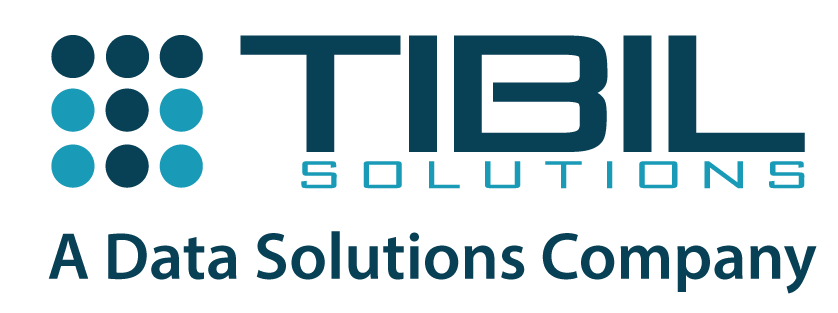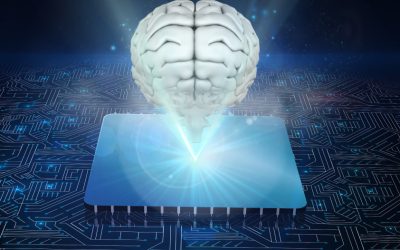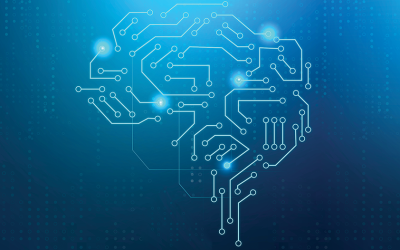
Edge Computing: The Key to Smart Manufacturing Success
Manufacturing firms world over are in the middle of historic development. With the rise of the IoT, we see a rapid increase in the number of data-centric and interconnected smart factories. Emerging technologies such as automation bring the promise of unimagined possibilities. However, smart and connected devices churn out huge amounts of data at the edge which must be processed almost instantly for Industry 4.0 to reach its full potential unobstructed by data-processing issues.
Edge computing is the concept of moving computing processes as close to the source of data as possible. Instead of relying on distant data centers, it uses local infrastructure to process data. It takes the cloud and brings it to the hardware that’s already all around you. Forecasts suggest that there will be 21.5 billion connected IoT devices worldwide by 2025. Imagine if just half of those could run computing tasks for other devices and services. This vast, interconnected computing network would be particularly valuable for smart manufacturing.
Following are a few benefits that manufacturers can gain by powering smart manufacturing with edge computing:
- More manageable data analytics
Big data is the foundation of the new industrial revolution. One of the most substantial advantages of the IoT is how it can improve data analytics. But analyzing all of this data requires a considerable amount of storage, bandwidth and computing power. Edge computing alleviates these concerns in two ways. First, it processes data at or near its source, so the overall process is much faster. Second, each data point within the smart factory processes its own information, thus easing the load off any single system while also refining the process. Since it’s segmented by nature, it’s easier to sift through and find the most relevant information. - Expanded interoperability
An IoT network is only as effective as it is interoperable. Finding compatible devices or systems can be a barrier to the expansion of smart manufacturing. Concerns over interoperability are one of the leading barriers to its adoption, since there’s no standard protocol. Moving computing functions to the edge eliminates some of the need for a universal standard. When devices can convert signals themselves, they’ll be able to work with a greater variety of systems. The edge also serves as a connection point between information and operational technology. It breaks down these distinctions, leading to a more cohesive smart factory - Predictive maintenance
Predictive maintenance means that a manufacturer can use data analytics to pre-emptively detect when a machine will fail and prevent this by conducting maintenance before a potential breakdown. By processing data at the edge, it becomes easier to take pre-emptive steps. - Reduced latency
When a data packet is sent to a data centre across the world, any action that depends on the response can get delayed. For mission critical applications this can be disastrous. In the context of manufacturing, if a connected machine detects a malfunction, any delay in transmitting that data and taking appropriate action can be expensive and can even damage the machinery. Cloud computing can thus be limiting. With edge computing, data can be processed right at the location and the appropriate action can be taken. - Better cybersecurity
While the IoT is great for smart manufacturing, more devices in the network also means potentially more entry points vulnerable to cyberattacks. However, if the processing and storage functions were spread throughout the edge and computing took place closer to the data source, a data breach is much more unlikely. - Reduced storage costs
Smart manufacturing produces a lot of data that needs appropriate storage. Legacy local storage options can be complex and cumbersome, and cloud services can be expensive. Storing data locally helps reduce the data that needs to be stored. - Edge AI computing
Edge AI has several applications in the manufacturing domain, such as enabling the widespread implementation of Industry 4.0 initiatives, including predictive analytics, automated factory floors, reconfigurable production lines and optimized logistics.
Sensors are mounted on machines and equipment and configured to continually stream data on temperature, vibration and current to the Edge AI platform. Instead of sending all data to the cloud, the AI analyses the data locally and constantly to make predictions for when equipment or a particular machine is about to fail. Manufacturers can process data within milliseconds, giving them real-time information and decision-making capabilities for machine learning intelligence.
Edge Computing – the future of Industry 4.0
Industry 4.0 can only get so far without transitioning to the edge, and will fall short of realising its full abilities In many scenarios. Besides, standard IoT analytics collect data from the edge devices and pass them to the cloud for analysis, then back to the device for action, thus increasing both cost and latency. Training a device to process critical data at the network edge via AI can make manufacturing units much more efficient. Manufacturers are now seeing AI’s potential to move beyond observing and reacting to machine behaviour, to taking a predictive approach, including creating a deeper understanding of signs of failure in operator performance, cycle times, equipment, scheduling maintenance runs and material planning through a 360-degree view of operations.
For edge computing to be able to support manufacturers effectively, the data produced by the myriad of sensors, embedded chips, industrial controllers, connected devices wearable computing devices, robots and drones must be analysed.
After bringing the IoT into the cloud, edge computing is the next logical step. Without adopting this technology, Industry 4.0 will be unable to unleash its full abilities. While the transition to the edge will not and cannot happen overnight, in the end it is all but inevitable.
At Tibil, we believe that while dashboards and visualizations are integral parts of data storytelling, there is much more to it. We work closely with our clients to ask the “why” behind the “what”, and turn your statistics into a powerful communication tool. Tibil has the ability to zero in on hidden layers within your business data, and then materialize this information into clear and simple actions for business strategy.
Related Posts
AI Toolbox: Creative Content Beyond ChatGPT & BARD
Introduction: In the dynamic landscape of artificial intelligence (AI), ChatGPT and BARD have garnered significant attention for their capabilities in natural language processing and music composition. However, a rich tapestry of AI tools exists...
Ethical Considerations in Generative AI: Ensuring Fair and Responsible Data Analytics
Introduction Generative AI, a transformative subset of artificial intelligence, is revolutionizing data analytics and machine learning. It empowers machines to generate data, images, and text that mimic human creativity. While the potential of...
Building a Better Future with Digital Public Goods
The world is on the cusp of digitization! In this era of digitization, we have transformed the way we communicate, interact, and access information. It has not only changed our personal lives but also has brought an evident transformation in the...
The Role of Artificial Intelligence in Cyber Security
In an era characterised by rapid technological advancements and increasing digitalisation, the field of cyber security faces an escalating and ever-evolving threat landscape. As cyber threats become more sophisticated, organisations must employ...
TinyML: The Future of Edge AI
Artificial intelligence (AI) has been a hot topic in recent years and with good reason. AI has the potential to transform countless industries and improve our lives in numerous ways. However, as powerful as AI can be, it also requires a lot of...
The Evolution of Federated Learning
Uber settled an inquiry into a data breach that exposed the personal data of more than 5,00,000 drivers in 2016 by paying $148 million. A GDPR breach resulted in a $57 million fine for Google in 2020. On-growing data privacy and data breach issues...
Subscribe To Our Newsletter
Lorem ipsum dolor sit amet, consectetuer adipiscing elit. Aenean commodo ligula eget dolor. Aenean massa. Cum sociis natoque penatibus et magnis dis parturient montes, nascetur ridiculus mus

Company
About us
Careers
Contact
Awards
Blog
Offerings
Strategy & Consulting
Managed Services
Solutions
Digital Public Goods
Solutions
Data Solutions
Industry Solutions






